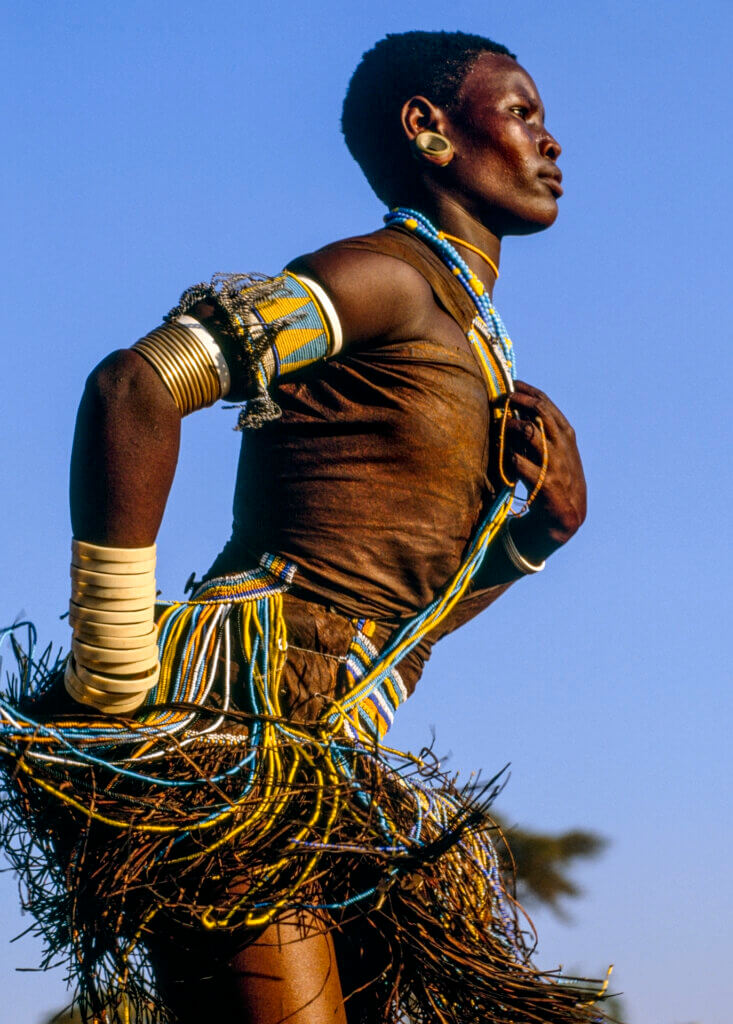
DANCING THE CROWNED CRANE
Barabaig Courtship
The Barabaig are traditional hunters and cattle herders who live in the shadow of northern Tanzania’s volcanic Mount Hanang. Their striking courtship dances mimic the mating rituals of the crowned crane, a magnificent bird with a crest of golden feathers admired by the Barabaig for its beauty and flamboyant courtship display.
Young men and women face each other in lines, and when a boy favors a girl he leaps into the air and utters a call like that of a crane. If attracted to the boy, she replies with an even higher leap and the same call. The seduction of dance continues as the boys whisper into the girls’ ears, “Not yet, not yet, we won’t play yet.”
The leather skirts worn by the young girls enhance their bird-like movements in the crane dance. As the girls arch their backs and spring upward, they throw their legs forward in a gesture reflecting the bird’s long-legged leap. The hides flare like wings, with a fringe of beads flying up, momentarily echoing the crested plume of the crane. These skirts have been fashioned by their mothers from sheep or goat hides that were made supple and dyed with ocher. Several hides were often stitched together and lined with cerulean-blue strings of beads that fell into the gathers.
When ready for marriage, Barabaig girls wear striking jewellery: veils of silver chains as well as coiled brass rings, armlets, and anklets and collars of large flat brass plaques. The Barabaig originally migrated from the Nile Valley over five hundred years ago and have carried with them echoes of Egypt in their jewellery designs.
Marriage rituals, in contrast to courtship, are simple and mainly performed by the married female members of the community. On this occasion the young groom, Samuel Gidori Gidahuyda, is marrying his bride, Esther Udabasad Dege Mahindi. The bride is prepared by her mother-in-law at the entrance of her hut with a mixture of butter placed in a mound on the girl’s head as a blessing. After nightfall, covered with butter and ocher, the bride is led out into the village, hidden beneath a leather cape and pulled along gently by a cord connecting mother and daughter. After the groom pays out the agreed bride price of cattle, the newly married couple are taken into the nuptial hut. Esther receives a simple strand of beautiful glass beads to indicate her marital status.